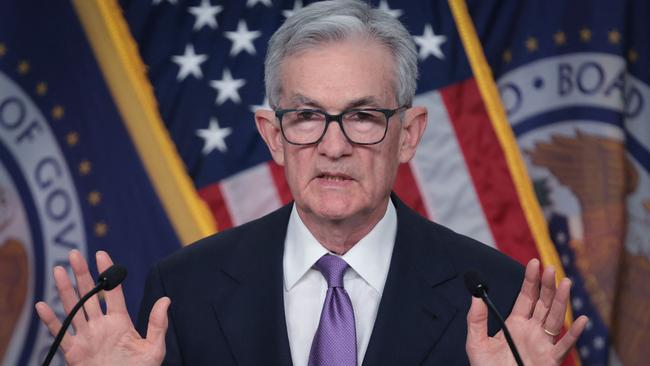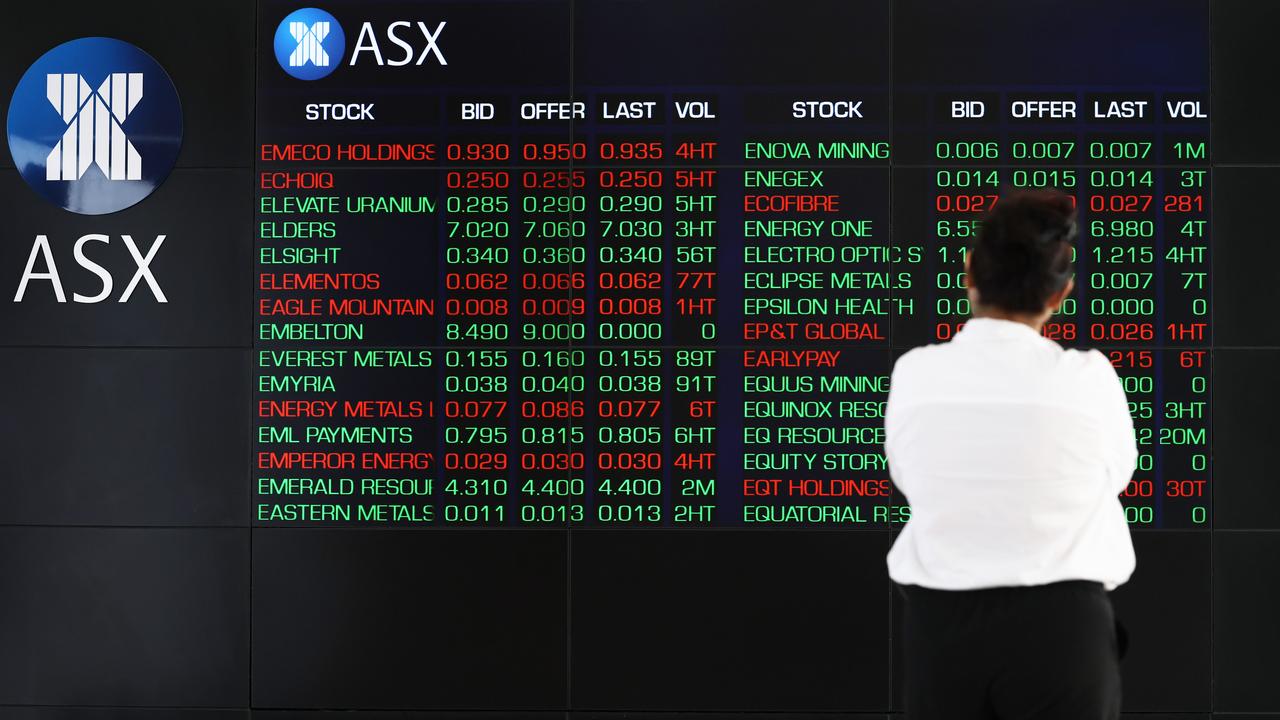Dovish US Federal Reserve gives flight to end-of-year rally
US disinflation and dovish signals from the US Federal Reserve are reinforcing strong year-end trends across stocks, bonds and the Aussie dollar.

US disinflation and dovish signals from Federal Reserve officials are reinforcing strong year-end trends in stocks, bonds and the Australian dollar.
Australian markets face lingering inflationary risks in the latest employment data and NAB’s monthly business survey this week but the US is casting a favourable backdrop Down Under.
Together with US CPI and PPI inflation data this week, the latest forecasts and interest rate from Fed officials including chair Jerome Powell had the potential to make or break the recent trends in markets.
But despite massive gains in stocks and bonds since October, lower than expected PPI data and the dovish Federal Reserve meeting pushed the S&P 500 up 1.4 per cent to an 11-month high of 4710.09.
After soaring 14 per cent in the past seven weeks, the US benchmark is up 23 per cent for the year to date, despite the fastest increase in US interest rates since the 1970s.
Wednesday’s US sharemarket surge came as the US 10-year Treasury yield dived 18 basis points to a 4.5-month low of 4.02 per cent. The US two-year bond yield plunged 31 basis points to 4.43 per cent.
It was the largest one-day fall in the two-year Treasury yield since the banking crisis in March, and before that the GFC. This time it has come without a “crisis” in financial markets.

“The great bull market of the 1980s started when inflation was finally put back into its box – as will the great bull market of 2022 to 2026 that started last year will do as well,” said Bell Potter head of institutional sales and trading Richard Coppleson.
Market pricing of the Fed funds rate for December 2024 plunged from about 4.3 per cent to 3.87 per cent, implying 146 basis points of rate cuts from the current target range of 5.25-5.5 per cent.
Australian markets followed a similar pattern, with the ASX 200 index soaring 1.7 per cent to a 4.5-month high of 7377.9 as the 10-year bond yield fell 20 basis points to 4.14 per cent.
The Aussie dollar hit a 4.5-month high of US67.28c, having soared 2.7 per cent in 24 hours.
It came as the US dollar dived on heightened expectations of US interest rate cuts and investors bet that the RBA won’t cut rates as fast as the Fed. Australian jobs data showed employment soared by 61,500 versus 11,500 expected, but the unemployment rate hit a 17-month high of 3.9 per cent versus 3.8 per cent expected, as the participation rate leapt to 67.2 per cent.
The employment to population ratio lifted to a new record high of 64.6 per cent, showing “household income stress” in the face of high inflation, rising interest rates and an increasing taxation burden was a driving force behind some of the increased labour supply, Westpac said.
The Australian overnight index swaps market brought forward its first 25 basis point cut projection for the Reserve Bank to June and added another cut in November. It was only in recent weeks that the Australian money market began to fully anticipate the start of rate cuts in Australia next year.
While the US CPI data met expectations, PPI data were much weaker than expected.
The Fed left rates on hold as expected. Importantly it didn’t push back on market pricing of several US interest rate cuts next year. The median of Fed funds rate assumptions in the “dot plot” of FOMC assumptions shaved off 50 basis points for 2024 and 25 basis points for 2025.
At the September FOMC meeting, the dot plot added 50 basis points of hikes for 2024 and 2025, contributing to the US bond market meltdown which saw the 10-year Treasury yield soar to a 16-year high of 5.02 per cent October, smashing global equities.
In early October, Fed officials started to “blink” and “pivot” away from rate hikes.
Significantly, the dot plot also showed that no participant expected a rate hike from here. Still, while one FOMC member saw rates at 4 per cent at the end of 2024, three saw rates above 5 per cent. Moreover, the Fed went out of its way to give dovish signals to markets. Recession worries may eventually resurface, but for now it’s all about the rapid disinflation of the US economy and potential interest rate cuts next year.
In its post-meeting statement, the Federal Open Market Committee softened its “tightening bias” by further downplaying the potential need for more rate hikes.
“In determining the extent of any additional policy firming that may be appropriate to return inflation to 2 per cent over time, the committee will take into account the cumulative tightening of monetary policy, the lags with which monetary policy affects economic activity and inflation, and economic and financial developments,” it said.
Mr Powell later confirmed that the addition of the word “any” was an acknowledgment that rates were at or near the peak of the cycle.
In his press conference, he did say the Fed was prepared to tighten further if needed.
However, he repeated his recent upgraded assessment that the stance of monetary policy is “well into restrictive territory”. In November he merely said policy was “restrictive in November”.
Significantly, he said the timing of US rate cuts was discussed at the FOMC meeting this week.



